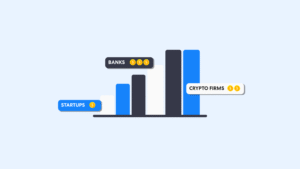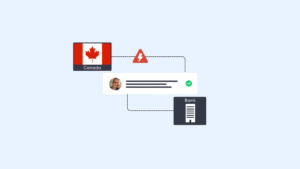With technological advancement, hackers and criminals’ methods and avenues to conduct financial crimes, both in the real and virtual worlds, have significantly increased. This has led to the implementation of KYC, also known as Know Your Customer (KYC), as an essential compliance and security measure for financial institutions and other businesses to maintain regulatory compliance. What is KYC verification?
This guide provides a detailed examination of KYC verification. It will address what Know Your Customer verification is, how the process goes, some of the challenges businesses face in implementing KYC compliance, and why it is important both for customers and businesses. Understanding these KYC procedures is essential for anyone engaged in business relationships and managing financial transactions.
The Legislation Frameworks Governing KYC
Implementing KYC is important to combat financial crime and terrorist financing and is also a legal requirement across many jurisdictions. For instance, the EU’s anti-money laundering directives (AMLD), the US Patriot Act, and the guidelines of the Financial Conduct Authority (FCA) and the Financial Action Task Force (FATF) mandate that businesses enforce comprehensive and auditable KYC processes. These laws drive organizations to collect, verify, and continuously monitor customer information to identify and mitigate potential risks.
The Evolution of KYC Regulations
KYC is an essential component of the broader anti-money laundering efforts. Governments have been imposing legislation since the 1970s to combat money laundering and fraudulent activities within their borders.
In 2023 alone, global regulators issued $5.8 billion in fines for AML and KYC non-compliance, underscoring the critical importance of robust KYC processes for organizations everywhere.
Let’s have a look at some of the most popular AML regulations enacted by different countries to protect financial institutions and customers worldwide.
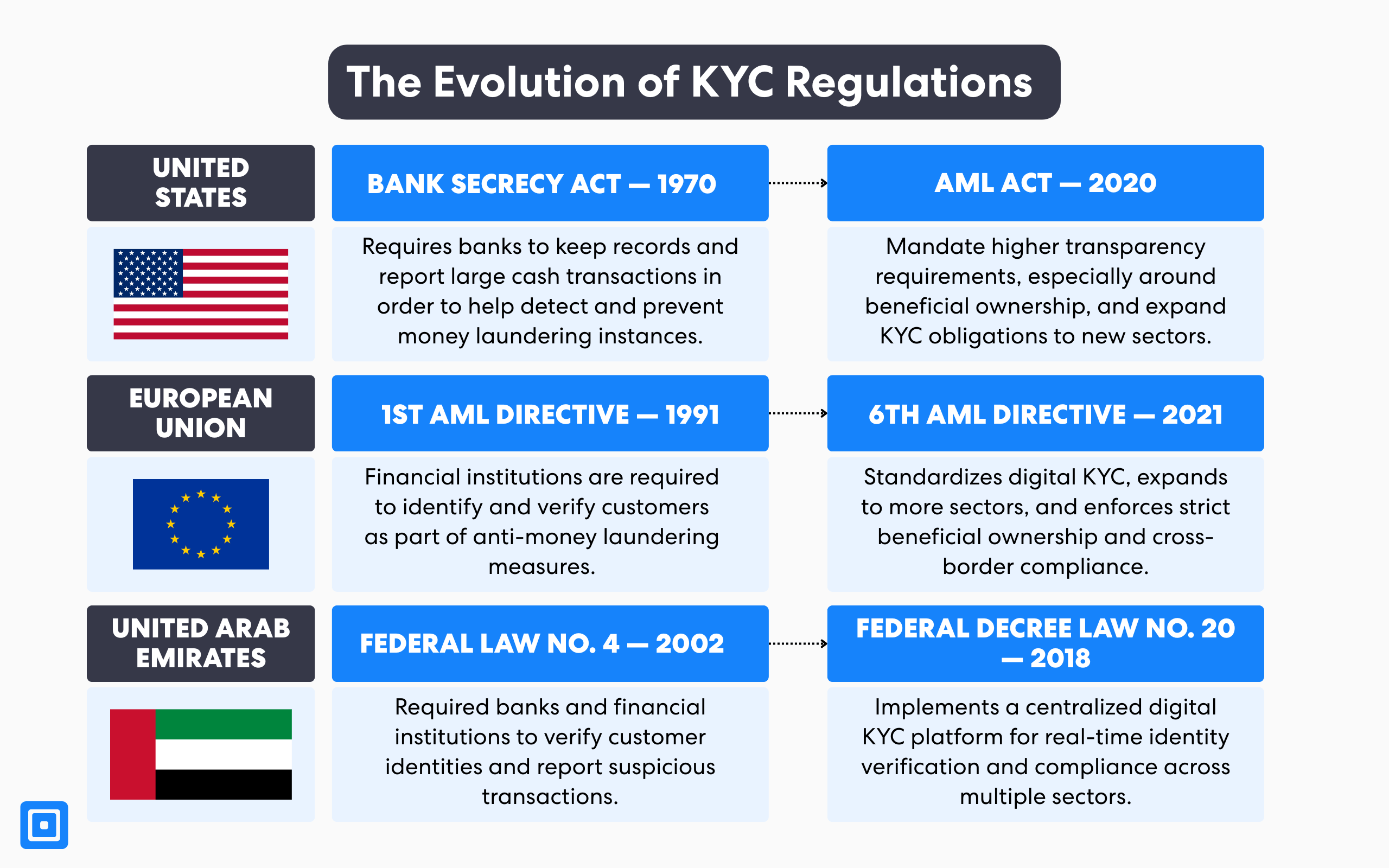
United States and The Bank Secrecy Act
In the United States, the first regulation started with the Bank Secrecy Act (BSA), enacted in 1970, which focused on recordkeeping and the reporting of large currency transactions. As technology progressed, it prompted further development of KYC regulations. This led to the US Patriot Act (2001), which expanded KYC requirements, and the adoption of the Anti-Money Laundering Act (AMLA) in 2020, which now encompasses a broader analysis of innovative technologies and their impacts on Anti-money Laundering (AML) legislation. Additionally, organizations such as the Financial Industry Regulatory Authority (FINRA) were established to supervise broker-dealers and ensure compliance with KYC requirements.
European Union and the First Anti-Money Laundering Directive
Meanwhile, in the European Union, the first anti-money laundering directive (1AMLD) was established in 1991. Since then, it has evolved to the sixth directive (6AMLD) in 2020, aiming to close additional money laundering loopholes through stronger identity verification solutions. The key changes include enhanced cooperation among EU member states, a requirement for all member states to criminalize specific serious offenses, and increased penalties for individuals and entities involved in money laundering, including mandatory minimum prison sentences of four years.
United Arab Emirates and Federal Law No. 4 of 2002
Similarly, the UAE established clear obligations for financial institutions and other regulated entities to identify and prevent suspicious transactions, mandating robust customer due diligence, ongoing monitoring, and KYC procedures. Its first fight against money laundering began with the enactment of Federal Law No. 4 of 2002. The framework was further strengthened by subsequent amendments, such as Federal Law No. 9 of 2014. It was ultimately replaced by Federal Decree Law No. 20 of 2018, which expanded the KYC requirements’ scope to include combating terrorist financing and financing illegal organizations.

Breaking Down the KYC Verification Process Step-by-Step
The KYC process is multi-faceted and unfolds in three main stages: Customer Identification Program (CIP), Customer Due Diligence (CDD), and lastly, the Ongoing Monitoring stage.
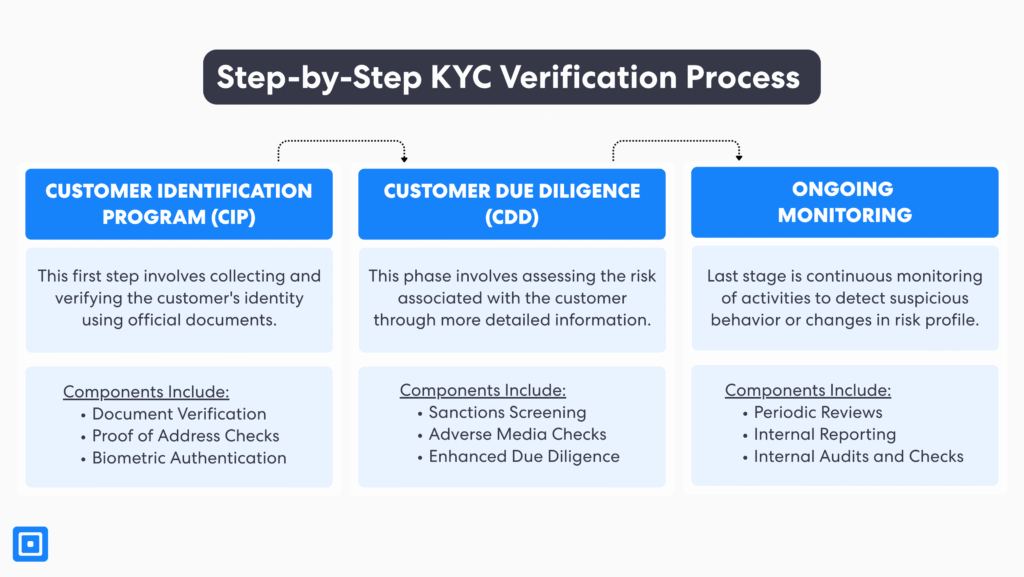
This section will provide a detailed overview of the specific stages and components typically found in the Know Your Customer verification process from a client’s perspective. The three key stages in a KYC process includes:
1. The Customer Identification Program (CIP): This first step involves collecting and verifying the customer’s identity using official documents. The components in this stage may include:
- Document Check: Organizations such as financial institutions will gather official government-issued identity documents from customers. These customer identification documents may include a driver’s license, passport, or birth certificate, which help to prove the customer’s identity.
- Biometric Authentication (optional): Many modern systems employ facial recognition technology to match a user’s selfie with their ID photo, preventing identity fraud. This verification can be performed live or through an uploaded image.
- Proof of Address Check: A Proof of Address (POA) check is employed to verify a customer’s residential address. This step ensures that the client’s address matches their provided customer records. Documents such as bank statements or utility bills are commonly used in the POA checks.
2. Customer Due Diligence (CDD): This phase involves assessing the risk associated with the customer through more detailed information. The components in this stage include:
- Sanctions Screening: Customers are screened against international sanctions lists and watchlists to ensure they are not prohibited from conducting financial transactions. This step helps businesses avoid facilitating illegal activities and ensures regulatory compliance.
- Adverse Media Checks: Reviewing news sources and public records to identify any negative information or red flags associated with a customer. This process helps uncover potential involvement in financial crime, fraud, or other illicit activities.
- Enhanced Due Diligence: EDD is especially essential for companies dealing with higher-risk customers, including Politically Exposed Persons (PEPs) or those involved in complex business relationships. EDD builds on CDD, demanding further KYC documents, conducting deeper background checks, and continuously monitoring the customer’s financial transactions.
3. Ongoing Monitoring: The last stage is continuously monitoring activities to detect suspicious behavior or changes in risk profile. The components in this stage may include:
- Periodic Reviews: Establish regular updates for reviewing and reassessing customer information and risk profiles to detect any changes or new risks that may emerge over time.
- Internal Reporting: Set up an internal reporting mechanism on a company-wide level. Escalate suspicious activities or compliance issues within the organization for timely investigation.
- Internal Auditing: Conduct independent reviews of AML/KYC controls to ensure compliance and improve risk management strategy where necessary.
The Role of Technology in Modern KYC Procedures
Technology has transformed KYC solutions for banks and other financial institutions such that it is now feasible to achieve more effective and scalable compliance with KYC regulations and AML laws. Previously, traditional Know Your Customer (KYC) practices entailed strenuous amounts of paperwork and manual checks, which were slow and prone to inaccuracies. Today, electronic KYC (eKYC), Artificial Intelligence (AI), Machine Learning (ML), and blockchain are the focus of modern KYC compliance programs.
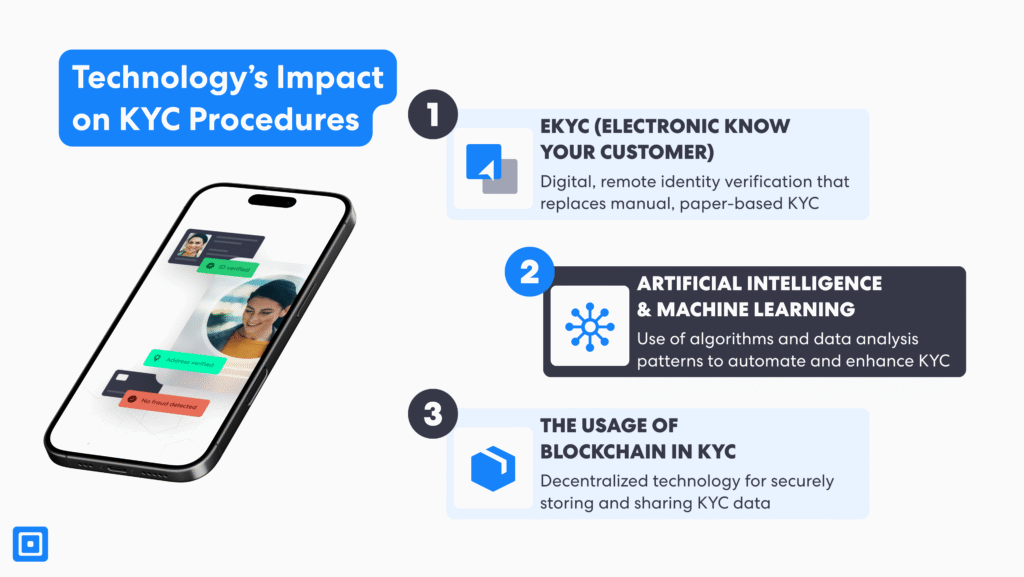
Electronic KYC (eKYC) and How It Prevents Money Laundering
Ekyc is the use of digital channels, including online channels, mobile apps, and biometric authentication, to name a few, to remotely and accurately validate a client. This digital process enables financial institutions to accurately validate people within a shorter time, reducing the cost of KYC compliance operations and onboarding time, while maintaining a positive consumer experience. eKYC supports financial systems in capturing, analyzing, and monitoring client information. In geographies with higher risk customers, the use of eKYC has led to enhanced risk assessments and regulatory compliance with real-time authentication.
Streamlining Customer Identity Verification with AI and ML
Artificial intelligence and machine learning have revolutionized KYC processes by automating data review, document validation, and risk assessment. AI and ML can analyze large amounts of data, detect counterfeit documents, and detect patterns of transactional behaviour that may signal money laundering or terrorism financing. AI-driven systems improve the accuracy of identity authentication, reduce the rate of false positives, and facilitate ongoing monitoring to ensure AML compliance. This enables compliance teams to deal with complex cases, improving the firm’s FinCrime prevention capability.
Upholding the Integrity of Financial Systems through Blockchain
Blockchain technology offers a transparent, impenetrable, and secure platform to store and exchange client identity data. By utilizing blockchain, banks can create impenetrable and decentralized digital identities, reducing the requirement to provide KYC documents repeatedly. It also makes the regulatory mandate less burdensome to meet without compromising data privacy. The transparency offered by using blockchain also supports enhanced audit trails and inter-institutional cooperation, maintaining the integrity of the world’s financial system.
Test Your KYC Knowledge
Now that you’ve explored the essentials of KYC verification, let’s take a quick break and put your knowledge to the test. Take the brief quiz below to assess your understanding of the key concepts for KYC. You’ll find the answers at the end of this article.
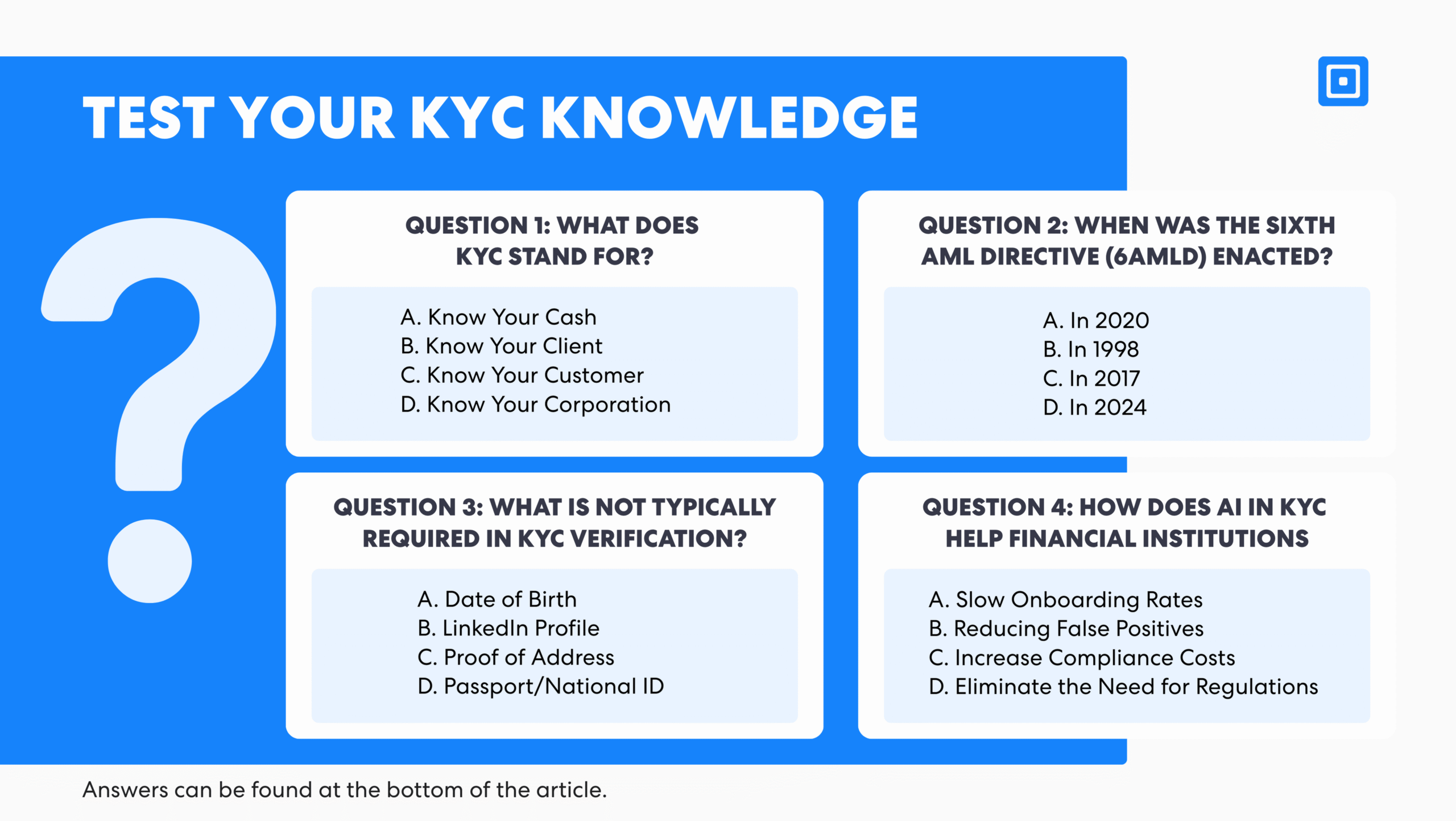
Is KYC and AML Compliance Only Subject to Financial Institutions?
With the risk of money laundering and financial crime outside of the financial and banking sectors increasing, a number of significant industries have now been legally obligated to embrace KYC verification. Below are some of the industries where legal and regulatory evolution has encouraged the integration of KYC processes:
- Art Dealers
- Insurance Company
- Gambling/Casino Industry
- Virtual Asset Providers (VASPs)
- Real Estate
- Credit Provider
- Online Gaming
- Accounting Firms
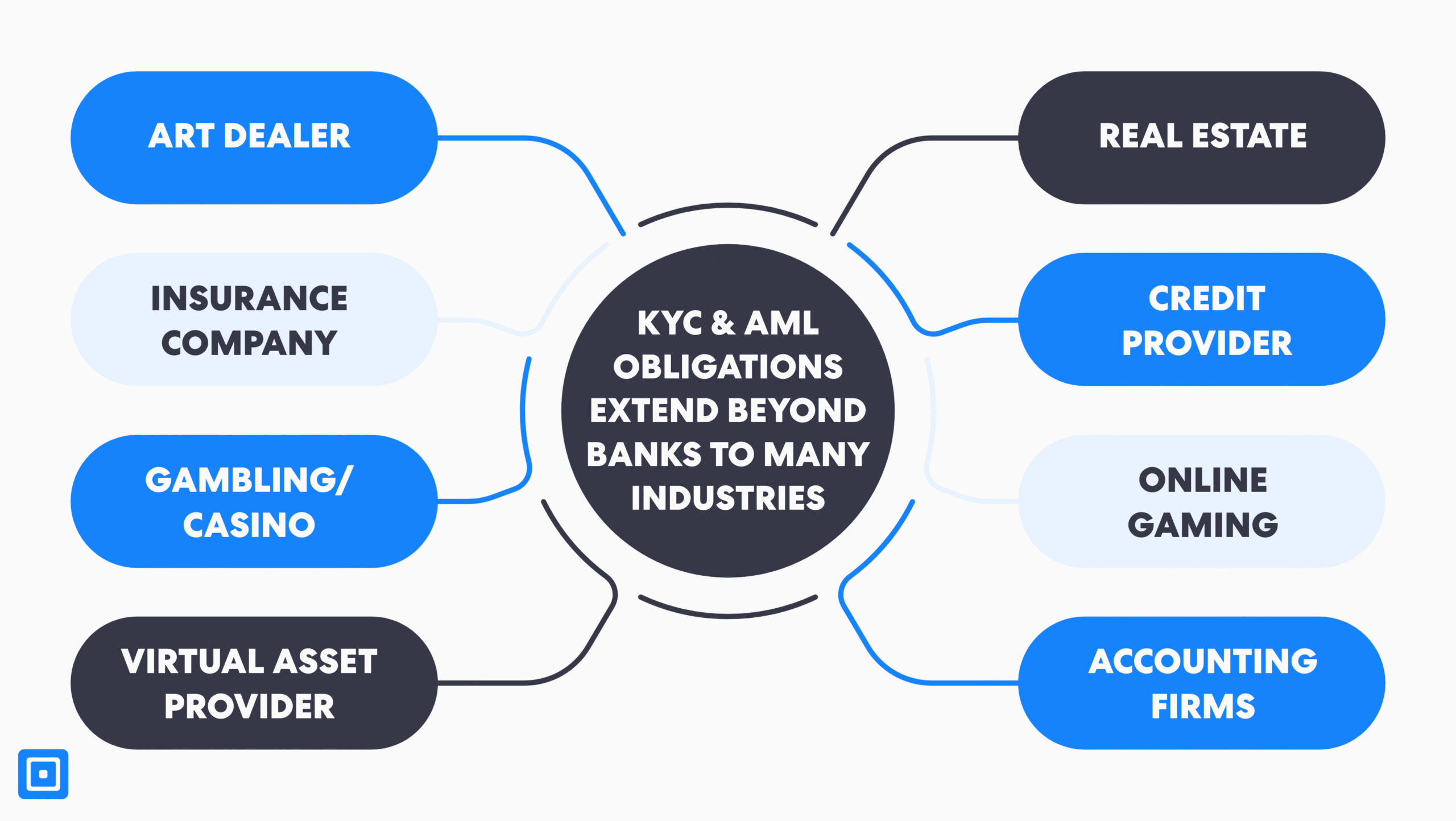
Real Estate
Firms in the real estate sector have now embraced KYC due to its vulnerability to money laundering through property transactions and complex ownership structures. In the European Union, the 4th Anti-Money Laundering Directive (4AMLD) directly subjected real estate agents to AML and KYC in 2018, making them responsible for identifying clients and ultimate beneficial ownership before a transaction.
Online Gaming and Gambling
The gaming industry has witnessed increased demand for KYC to prevent fraud, underage play, and money laundering. AML Directives in the EU mandate online gaming sites to identify and authenticate a player’s identity, age, and geolocation and conduct transactional monitoring to detect unusual patterns. In the US, firms in the gambling sector are met with stringent KYC requirements, forcing operators to have robust customer authentication and verification measures.
Bitcoin and Digital Assets
Legislation targeting Virtual Asset Service Providers (VASPs), such as the 5AMLD, has subjected exchanges and wallet providers to KYC and AML compliance. Meanwhile, cryptocurrency companies in the US are obligated to be registered as money services businesses and comply with KYC and AML requirements. Such legal requirements are meant to ensure that digital assets are not used for illegal financial flows.
High-value dealers and other companies
Art traders, precious metal traders, and luxury goods traders are also subject to KYC requirements since valuable goods can be targeted for money laundering. For instance, precious metal traders and art traders are now forced to conduct due diligence on buyers in cases of deals worth above certain thresholds. Similarly, professional companies such as law firms and accounting firms in most regions are legally bound to identify beneficial owners and clients in cases of higher-risk-of-crime deals.
Empower Your Know Your Customer (KYC) Solutions with ComplyCube
KYC verification is no longer just a checkbox. It has become a vital process for protecting the integrity and trust of businesses worldwide. With strong Identity Verification (IDV) and Anti-Money Laundering (AML) frameworks, firms can take a proactive risk-based approach to maintain alignment with evolving regulations.
ComplyCube is the award-winning, all-in-one compliance platform made and designed for businesses looking to streamline AML/KYC approach. Leveraging advanced, no-code technologies, ComplyCube makes client verification and onboarding rapid, accurate, and ready to scale with your organization. Get started for free today.

Test Your KYC Knowledge Quiz Answers In Respective Orders: C, A, B, B


